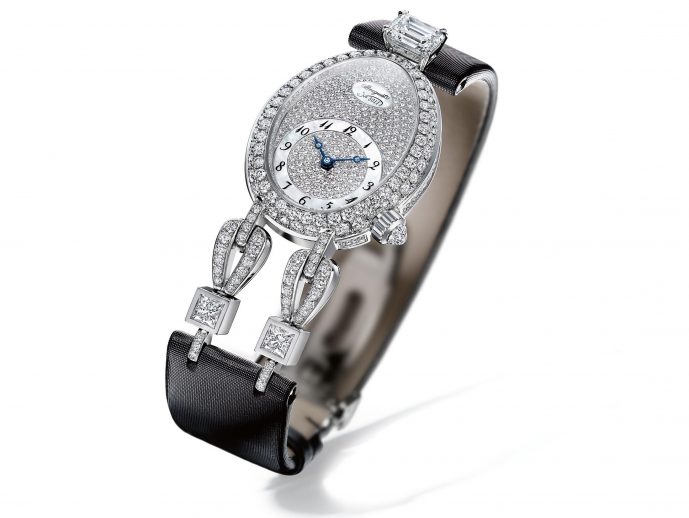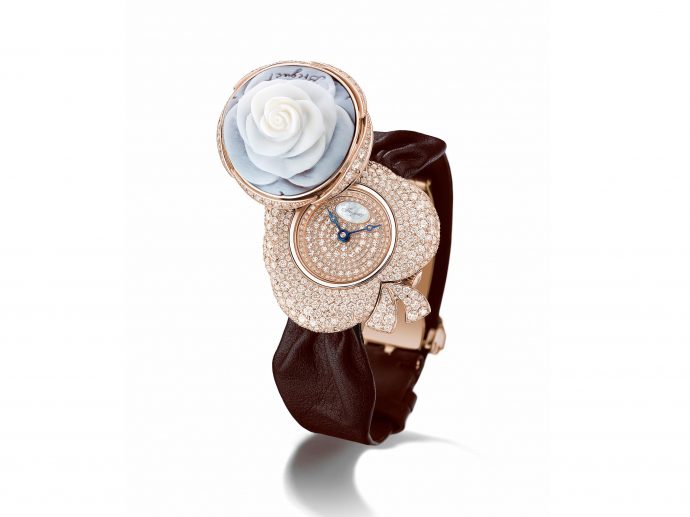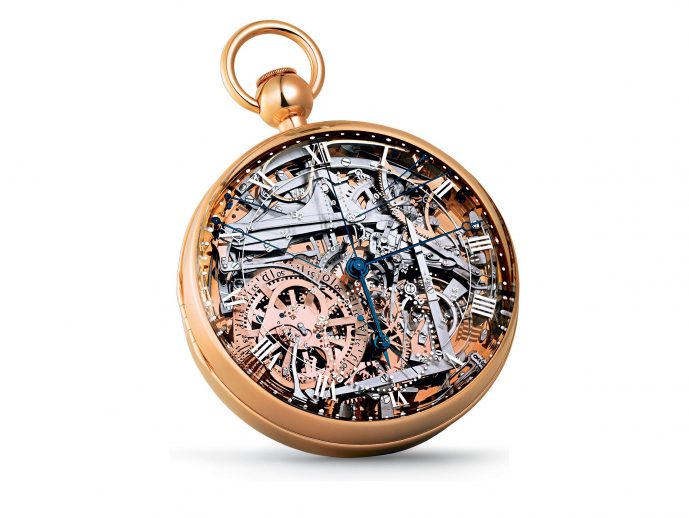Categories more
- Adventures (17)
- Arts / Collectables (15)
- Automotive (37)
- Aviation (11)
- Bath, Body, & Health (77)
- Children (6)
- Cigars / Spirits (32)
- Cuisine (16)
- Design/Architecture (22)
- Electronics (13)
- Entertainment (4)
- Event Planning (5)
- Fashion (46)
- Finance (9)
- Gifts / Misc (6)
- Home Decor (45)
- Jewelry (41)
- Pets (3)
- Philanthropy (1)
- Real Estate (16)
- Services (23)
- Sports / Golf (14)
- Vacation / Travel (60)
- Watches / Pens (15)
- Wines / Vines (24)
- Yachting / Boating (17)
Published
07/15/2016 by BreguetMontres Breguet and its President & CEO Marc A. Hayek are honoured to announce an exclusive partnership with the château de Versailles. Following on from the brand’s sponsorship of the restoration of the Petit Trianon, this year Breguet is delighted to support a captivating retrospective dedicated to Queen Marie Antoinette. The exhibition entitled “Marie Antoinette, a Queen in Versailles” will be held from Tuesday, 25 October 2016 to Sunday, 26 February 2017 in the highly renowned Mori Arts Center Gallery in Tokyo, Japan. Here, we take a look back at the exceptional bond that links Breguet to the last queen of France.
When Abraham-Louis Breguet left his native Switzerland for Paris in 1762, little did he suspect that he was about to embark upon a dazzling career that would indisputably take watchmaking to new heights. Abbot Joseph-François Marie, who had close ties to the French court, took him under his wing and enabled him to establish connections with those in power. Before long, he had impressed one particular customer who would go on to play a pivotal role in the young watchmaker’s career and in the history of the entire horological industry in general: Queen Marie Antoinette of France.
The beginnings of a unique bond
After establishing his workshop on Paris’s Quai de l’Horloge in 1775, A.-L. Breguet received his first order from the Queen in 1782, for whom he created a perpetual repeater watch with calendar. It is likely that Breguet was introduced to the Queen at this time. She was soon charmed by the magnificent and ingenious creations of the master watchmaker, becoming one of his first and most faithful admirers. Always on the lookout for promising new creations, she purchased several timepieces from the watchmaker and readily expressed her enthusiasm to the French court and some of her guests, including foreign diplomats. Given the context of courtly life in the 1780s, who could be better placed than the Queen to establish a reputation and promote an as yet relatively unknown name? Until her very last days, the Queen demonstrated exemplary loyalty to the brand and even commissioned a “simple Breguet watch” from within the Temple Prison, where she was held captive in 1792.
A legendary watch for the Queen
Incidentally, it was for Marie Antoinette that Breguet designed a watch that would remain the most complicated wristwatch ever produced for almost a century. It all began in 1783, when A.-L. Breguet received a surprising order from an unidentified officer of the Queen’s guard. It involved producing a watch for the sovereign that incorporated all the complications and developments known at the time. No limits were set in terms of production time or cost, and gold was to replace all other materials wherever possible. More than just an order, this was a veritable challenge that Breguet was honoured to accept.
However, the Queen never had the chance to admire the timepiece. It was only completed in 1827 – 34 years after her death, 44 years after it was ordered and 4 years after the death of A.-L. Breguet himself.
Both the extreme complexity of this timepiece and its remarkable history have captivated the watchmaking world and collectors for more than two centuries. Stolen in 1983 from a museum in Jerusalem and eventually relocated in December 2007, this uncontested masterpiece of the watchmaking art has experienced a journey that is so enigmatic and shrouded in mystery that it has become a real subject of fascination.
In 2005, the late Nicolas G. Hayek, who took over Breguet in 1999 as part of the Swatch Group, set his teams the challenge of identically reproducing this exceptional pocket watch. Recreating such a large number of complications on the sole basis of a few documents proved to be a real challenge for the Manufacture’s watchmakers. The details gleaned from the archives and original drawings held in the Breguet Museum and other cultural centres, such as Paris’s Musée des Arts et Métiers, was the only source of information available for each function or aesthetic feature. During this incredible project, Breguet learned that Marie Antoinette’s oak, the Queen’s favourite tree in Versailles, was diseased and about to be cut down. In an attempt to give it a second life, the decision was taken to use the wood from the tree to craft the box of the Marie Antoinette watch. Versailles thus gave a sizeable piece of this oak tree to the watch brand which, in recognition of this gift, chose to support the estate, which forms an undeniable part of its history. This was the beginning of a new milestone in Breguet’s connection to Versailles.
The Petit Trianon, the Queen’s favourite estate
As part of its desire to contribute to the preservation of European historical and cultural heritage, Montres Breguet therefore decided to support the château de Versailles by reviving an estate that belonged to Marie Antoinette and which she adored: the Petit Trianon. More than a place of residence, this was a special, sophisticated location where the Queen could escape from the tiresome protocol of the court to enjoy her pastimes and a more authentic lifestyle. The brand’s actions have thus enabled a jewel of French neoclassical architecture to be restored to its former glory. All of the original decorative features have been restored, museological adjustments have been made, the apartments have been refurnished and all the technical installations have been revised. After commencing in 2007, the works came to an end in September 2008.
Marie Antoinette, a source of everyday inspiration
In homage to this prestigious customer, Breguet has regularly drawn inspiration from the Queen’s world to create exceptional pieces. For instance, in 2009 it unveiled the “La Rose de la Reine” High Jewellery line, which is inspired by the famous painting Marie Antoinette with the rose by portrait artist Elisabeth Vigée-Le Brun. Breguet recreated the famous rose held in the Queen’s hands using cameo, the traditional southern Italian art of sculpting the different layers of a shell by hand.
Meanwhile, the “Les Volants de la Reine” collection pays vibrant tribute to the outfits worn by the Queen of France. First presented in 2014, the range astonishes with the elegance and complexity of its shapes, which recall the finest pleated silks and laces that adorned dresses at the time.
The Petit Trianon – the haven of peace in which the Queen loved to relax – has also become a source of inspiration for the Manufacture. The “Petit Trianon” jewellery line, launched in 2009, offers a simple reinterpretation of the refined, royal theme that characterises the place she cherished so dearly.

















